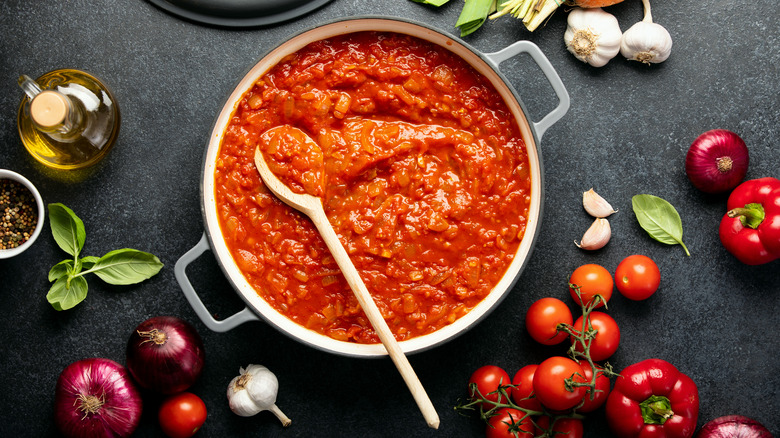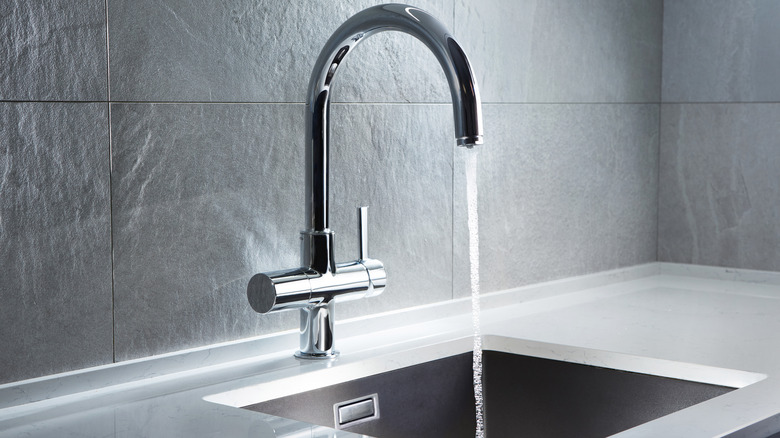The Effortless Way Chefs Thin Restaurant Sauces
Certain restaurant dishes would likely be dry or bland without sauce, like pork ribs without a side of BBQ sauce. But sauces, of course, are not solely viewed as a condiment for dipping, especially when it comes to the five mother sauces. According to Webstaurant Store, these are tomato sauce, hollandaise, béchamel, velouté, and espagnole. Tomato sauce is self-explanatory, but for those who don't know, hollandaise is the bright yellow, lemony, buttery sauce that drapes over eggs benedict or vegetables. Béchamel blends milk and a white roux to form a cream sauce for mac and cheese and a host of other comforting dishes. A velouté is best for creamy soups and contains white roux and white stock, and espagnole has a deep brown color to its stock and tastes earthy and tomatoey, which is perfect for braised short ribs.
The sauces above are all French, though that's not to say that other countries don't have their spin on tasty sauces. As The News International mentions, Argentina's chimichurri is herbaceous, a bit spicy, and perfect for steaks. In Lebanon, the garlicky favorite known as toum has a paste-like texture that redefines what a sauce should look like. And in the United States, some sauces, like chocolate gravy, take on a sweet side that complements breakfast-style biscuits. But no matter what type of sauce you're making, there's always a possibility of making one much too thick. Here's how to fix this mishap.
Just add water
It's a restaurant trick to add water to super thick sauces or soups, according to Chef Alissa Fitzgerald of Insider. But don't add too much water all at once due to potential watery flavors that are even more difficult to remedy. Start with a small amount, taste the sauce, and add more water as you see fit. So how much water should you add? Well, that depends on the sauce recipe, and most outlets don't specify the exact measurements. But, as an example, overly thick nacho cheese sauce benefits from 1 tablespoon of water (per Mexicali Blue), while soy sauce may require a smaller amount, about 1 teaspoon, via We Want The Sauce. And again, add another tablespoon or teaspoon of water if the sauce needs it.
For something like thick tomato sauce, Martha Stewart opts for pasta water instead of tap water or oil. As a general guideline, one serving of cooked pasta and sauce gets two tablespoons of pasta water, per Serious Eats. (Bonus: this helps unify the sauce and pasta together.) In short, it seems like a tablespoon of water is an excellent place to start for a batch of sauce. Or, you can use a teaspoon of water for a smaller amount. Either way, this easy trick will help to thin out just about any restaurant-style sauce.

